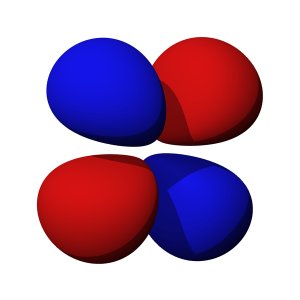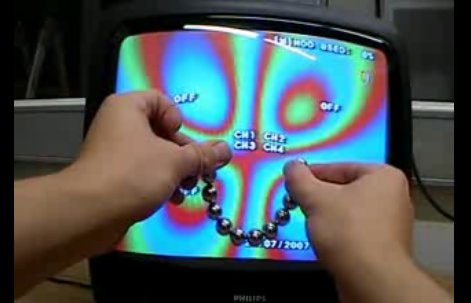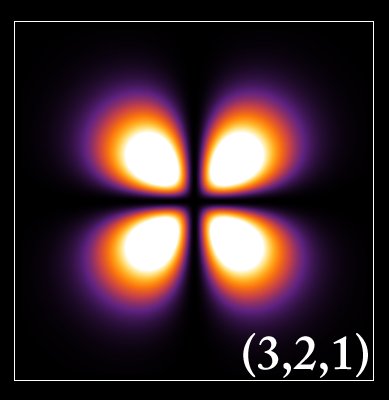

gre
Senior Members-
Posts
247 -
Joined
-
Last visited
Content Type
Profiles
Forums
Events
Everything posted by gre
-
This is probably a flawed view ... But here is what I was thinking/wondering ... Could ground state hydrogen have two different frequencies within its ground state? One that represents the electric field / electron ... and another which represents the magnetic field / magnetic flux quanta. The De Broglie ("matter wave") frequency, is one, which can be determined with: f_matter = (m * v^2) / h = (electron_mass * (a*c)^2) / h f_matter = (9.10938188e-31 kg * (2.1876912640028e6 m/s)^2) / 6.6260689633e-34 = 6.579683785380655e15 hz The Zitterbewegung angular frequency, is the second, which can be determined with: f_zitter = (2*m*c^2) / h-bar using the kinetic mass-energy of hydrogen's ground state: kinetic_mass-energy = ((1/2)*me*(a*c)^2) / c^2 = 2.42543e-35 kg Plug this into the Zitterbewegung equation: f_zitter = (2 * 2.42543e-35 kg * c^2) / hbar = 4.134137e16 rad/sec Convert to hz: 4.134137e16 / (2*pi) = 6.579684741937312436e15 hz Subtract the De Broglie frequency from the trembling frequency: f_zitter - f_matter = 6.579684741937312436e15 - 6.57968378538066519742e15 = 9.565564e8 Hz Which is (2/3) of the hydrogen 21-cm line frequency of 1.42040575e9 Hz (3/2) * 9.565564e8 Hz = 1.42e9 Hz Strange?
-
Anyone? Merged post follows: Consecutive posts merged Yes, but do you think there could be similarities at a fundamental level as well?
-
Doesn't the problem come down to there's no "absolute reference frame" to slow down from? I believe there is an absolute reference frame WRT mass, time, velocity through space, etc, somewhere in the universe.... A large back hole maybe? But I don't think physics has an absolute universal reference frame to slow down "against".
-
What's the (wave) function for the magnetic field lines on the CRT? Also, will the patterns change if the magnet on the screen is heated or cooled, or if the electrons in the tube change velocity?
-
-
Why does the hydrogen (3,2,1) wavefunction look so similar to the field lines generated on this CRT?
-
I think I've tied the hyperfine splitting/structure into this "model".
-
What time is it inside a black hole? .. If time changes does to gravitational effects, could the time be either 0 or infinite?
-
If I had to guess. I would assume the kinetic mass-energy of an orbital electron was the actual (massless) wave aspect of the electron.
-
This is a quality all perpetual motion scammers share (along with the, "MIBs will come and get me" garbage). You won't find any that are willing to share their designs, for scientists to replicated, for a supposed 'revolutionary' technology .. Which has been attempted 1000 times over. Take a look at this site: http://www.panaceauniversity.org/ This site has about every overunity idea ever thought of and probably the magnetic motor you're talking about as well ... (like Phi for All said) If just one free energy design really worked, don't you think you'd have heard of it by now?
-
Where is the energy supposed to come from? Energy isn't something magical you can just make appear with strong magnets.
-
I don't know. Could it have any significance?
-

a way to visualise 10 dimensions
gre replied to insane_alien's topic in Modern and Theoretical Physics
Why can't you just use this perspective: 3D spacial +1D time = 3D world with motion, or 4D? Here's another way to visualize extra dimensions (which may not be correct); A ( x,y,z) axis Cartesian coordinate system ... So you have 8 3D quadrants, 2 2D planes, and a axis for time. 11 dimensions total. -
Observing that a result could actually be half the area of a sphere * a magnetic field strength, could make sense, I think... no? Anyone know the answer to this? Merged post follows: Consecutive posts merged It looks like I replaced the electron mass with relativistic mass of the ground state kinetic energy (13.605 ev) If, [math]{\mu}[/math] = (( - e / (2 * (( -13.605 eV) / c^2 )) ) * h-bar) The result is 235051 T on the orbital radius.
-
I was referring to my assumption that ground state hydrogen contains 2 magnetic flux quanta (particles). Then I was asking .. if that agreed with the standard model / quantum mechanics. This is where I'm getting confused. I'm working with magnetic flux measured in webers J/A and magnetic field strength measured in T. The magnetic moment is measured in units J/T. How do you convert the magnetic moment to field strength in Teslas. I'm assuming my previous method is correct? magnetic flux = field_strength * area So I came up it in an attempt to make geometric sense out of the other equation. I understand this doesn't make it correct, but it seemed to work.
-
Does the result make sense, though? How many magnetic flux quanta exist in the ground state of hydrogen (according to QM)? Merged post follows: Consecutive posts mergedB * (2 * pi * r^2) Seems strange to me .. and would be a (magnetic field strength) * (area of half a sphere). Could this represent the geometry of an electron in a spin up or down state?
-
Right. Not in those equations, but I've seen (apparent) discrete values come out of classical equations wrt ground state hydrogen. How about the following: Magnetic flux of ground state hydrogen: (f * m * (2*pi*r)^2 ) / e or B * (2 * pi * r^2) where, f = 6.57e15 hz , m=electron_rest_mass, r =5.29e-11 m , e = 1.602e-19 C , B = (13.605 eV)/Bohr_Magneton The result is (2 * magnetic_flux_quantum)
-
Here is a link that describes the general direction I was going .. apparently. http://www.absoluteastronomy.com/topics/Stochastic_electrodynamics Can Stochastic electrodynamics really enable classical modeling of some quantum phenomena? edit: This theory has already been given a black eye by the 'free energy' gang, I see.
-
What is negative impedance exactly? According to this Wiki article, it is an "energy injection".. But I'm not sure whether the information is credible. http://en.wikipedia.org/wiki/Negative_resistance#What_a_negative_impedance_is
-
Can the fine structure constant also be considered a conversion factor between free vacuum impedance, and the fractional quantum hall effect with a filling factor of (1/2)?
-
I think real proof would require a lot more than just my (extremely non-rigorous) math. I was just hoping for some in depth explanations and discussions. Not acceptance, or arguments wrt other models.
-
This is actually something I've been wondering about, as well .... Mass cannot move faster than the speed of light. But what gives the electron the "smear", as it is described? If an electron was to move (in some way) faster than c, could it have the appearance of being in multiple locations simultaneously (as described by QM)? The electron trembling motion/"zitterbewegung" described by schrodinger does mention electron movement at around the speed of light, I believe.
-
What do the equations in post #19 have to do with the Bohr Model? Anyway, I was hoping this thread wouldn't become a debate between classical and quantum mechanics. The schrodinger/wave-function model is far more useful anything else wrt atomic properties, I don't think that can be argued. Mostly what I'm wondering about is: If there is a possibility that atomic wave functions are dictated by magnetic fields? For example, have look at the hydrogen wave function (3,2,1) seen here: http://en.wikipedia.org/wiki/File:Hydrogen_Density_Plots.png Then take a look at these field lines on a CRT with a strong magnetic close to it. Why do these look so similar?
-
I just thought it was strange the frequencies (6.57e15 hz, and 4.13e16 rad/sec), seemed to fit so nicely with so many different different equations, including zero-point field, and a few others. So other than the weird B field calculations, what else is wrong with the calculations in post #19? How would you say it is directly tied to the Bohr Model, do you say because I used the (bohr) radius of the hydrogen atom, and (a*c) as the electron velocity? Thanks, Greg
-
swansont, Please clarify the following for me... 1.) What about the Bohr Radius? Not necessarily as a "set in stone orbital" but a measure of something else? I noticed it does come out of the Schrodinger equation. Does it not have any significance at all? 2.) I wasn't trying to portray "orbitals" at all (an electron flying around a proton), even though I did use the word "orbitals". I was thinking the frequency could be more of a vibrational frequency, I guess like "Zitterbewegung" described here http://en.wikipedia.org/wiki/Zitterbewegung. I noticed the kinetic energy of the ground state electron (13.605 eV) has a energy-mass of 2.425e-35 kg. I used this mass in the Zitterbewegung equation: 2*m*c^2 / hbar .. And the frequency is the same as I came up with in my previous post. Is this meaningless as well? 3.) How do you calculate the correct angular momentum of the ground state electron. Isn't it sqrt(3)/2 * hbar? Thanks, Greg



